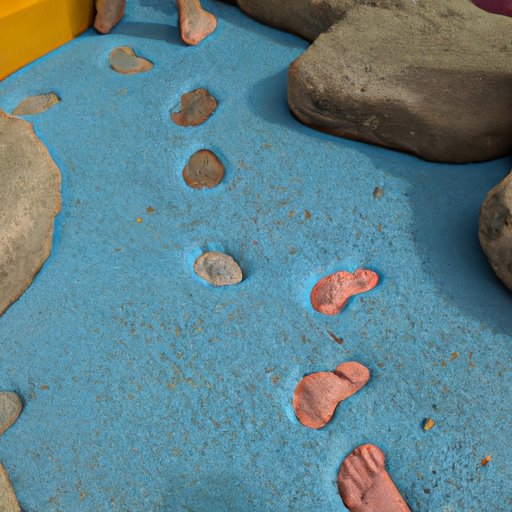Introduction
Writing can be a powerful tool for conveying emotion and creating vivid imagery, and describing footsteps is no exception. In this article, we’ll explore different ways to bring footsteps to life on the page and share tips for capturing the impact and feelings of every step. Whether you’re writing a short story or a novel, you’ll find useful advice here for making your characters’ footsteps come alive.
Focus on Impact of Footsteps
When it comes to describing footsteps, the most important thing to focus on is the impact they have. Start by thinking about the sound they make – are they light and quiet, heavy and loud, or something in between? Describe the sound in detail, paying attention to how it echoes in a particular space. For example, if the character is walking through a hallway, you could describe their footsteps as “light but echoing off the walls like thunder.”
You should also consider the vibration felt with each step. Describe how the floor shakes or trembles beneath them, or how their footsteps reverberate throughout the room. This can create a sense of tension and suspense, or evoke a feeling of power and strength.

Use Sensory Detail to Bring Footsteps to Life
In order to really bring footsteps to life on the page, you need to use all five senses. Focus on textures and smells as well as sounds. Describe the crunch of leaves underfoot, the smell of damp earth, or the feel of gravel beneath their shoes. This will help to create a more vivid image in the reader’s mind and make the scene more believable.
Describe Pattern of Footsteps
Think about the pattern of the footsteps and how they change over time. Are they quick and hurried, slow and steady, or something else? Highlight any pauses or changes in pace to show the character’s emotions or state of mind. If they’re feeling anxious, their footsteps might be faster and more erratic. If they’re feeling hesitant, they might pause frequently or take smaller steps.
Show Character’s Feelings through their Footsteps
Finally, think about how the character is feeling and show it through their footsteps. Are they feeling anxious, excited, or hesitant? Consider how this might affect the sound and vibration of their footsteps. Use descriptive language to capture their emotions and create an emotional connection with the reader.
Consider Environment and Setting
Don’t forget to consider the environment and setting when describing footsteps. How do the footsteps interact with the ground and atmosphere around them? Describe the sound of their feet against the grass, the splash of puddles, or the crunch of snow. This will help to create a more realistic and immersive experience for the reader.
Conclusion
In this article, we’ve explored different ways to bring footsteps to life on the page. We’ve looked at how to focus on the impact of footsteps, use sensory detail to bring them to life, describe the pattern of footsteps, show character’s feelings through their footsteps, and consider environment and setting. By following these tips, you’ll be able to write compelling and realistic descriptions of footsteps that will draw readers in.
(Note: Is this article not meeting your expectations? Do you have knowledge or insights to share? Unlock new opportunities and expand your reach by joining our authors team. Click Registration to join us and share your expertise with our readers.)
